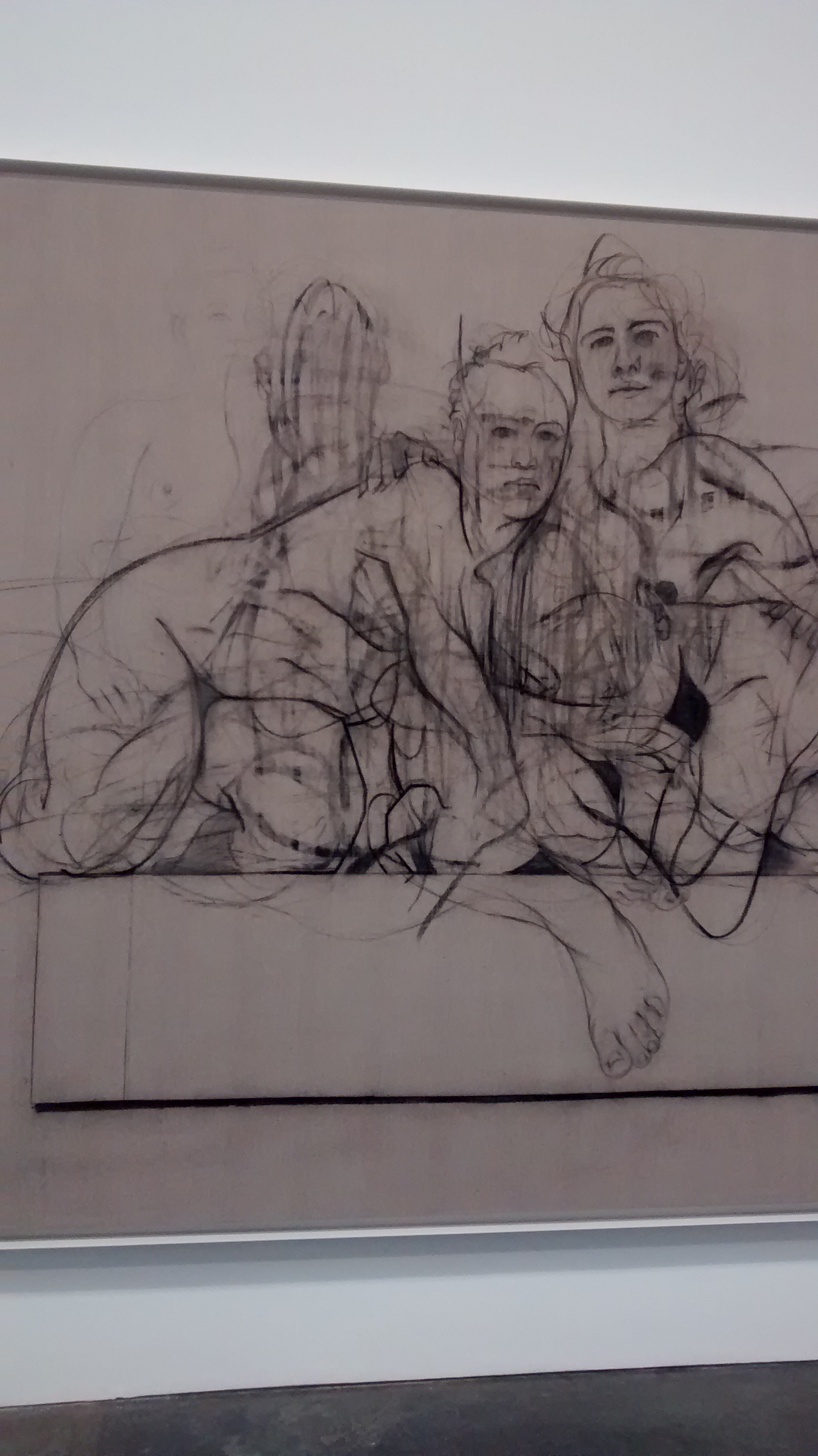
Jenny Saville’s latest work exhibited at Gagosian’s Jenny Saville: Ancestors in Chelsea, New York is markedly layered both literally and figuratively speaking.
What do I mean?
First of all, her artistic process is revealed on the canvas. After you take in a work as a whole and begin to notice sections, in one area you may see the drawings that led to the painting, in another the artist has hidden the human form of her subjects under, what she calls, a “transparent” layer of abstraction. Secondly, Saville has layered her references. In these last works notes of the artist’s overall oeuvre, utterly reflective of her past work, intermingle with historical references like those to tribal masks, eastern myths, while she also may also use the pieta motif for structure. In her couples paintings, for example, the human subjects are placed upon a pedestal, in languish, sensual poses reminiscent of Etruscan sarcophagi.
In this way, Saville’s layering becomes a game of reading as well as mapping the cross-temporal references the artist has drawn in each work. After releasing yourself from the intense hold of her subject’s glances, Saville’s paintings reveal to you all of the patterns, motifs, and structures you may know from history. This is the moment you begin to peel away at literal and conceptual layers the artist has weaved to create these large works.
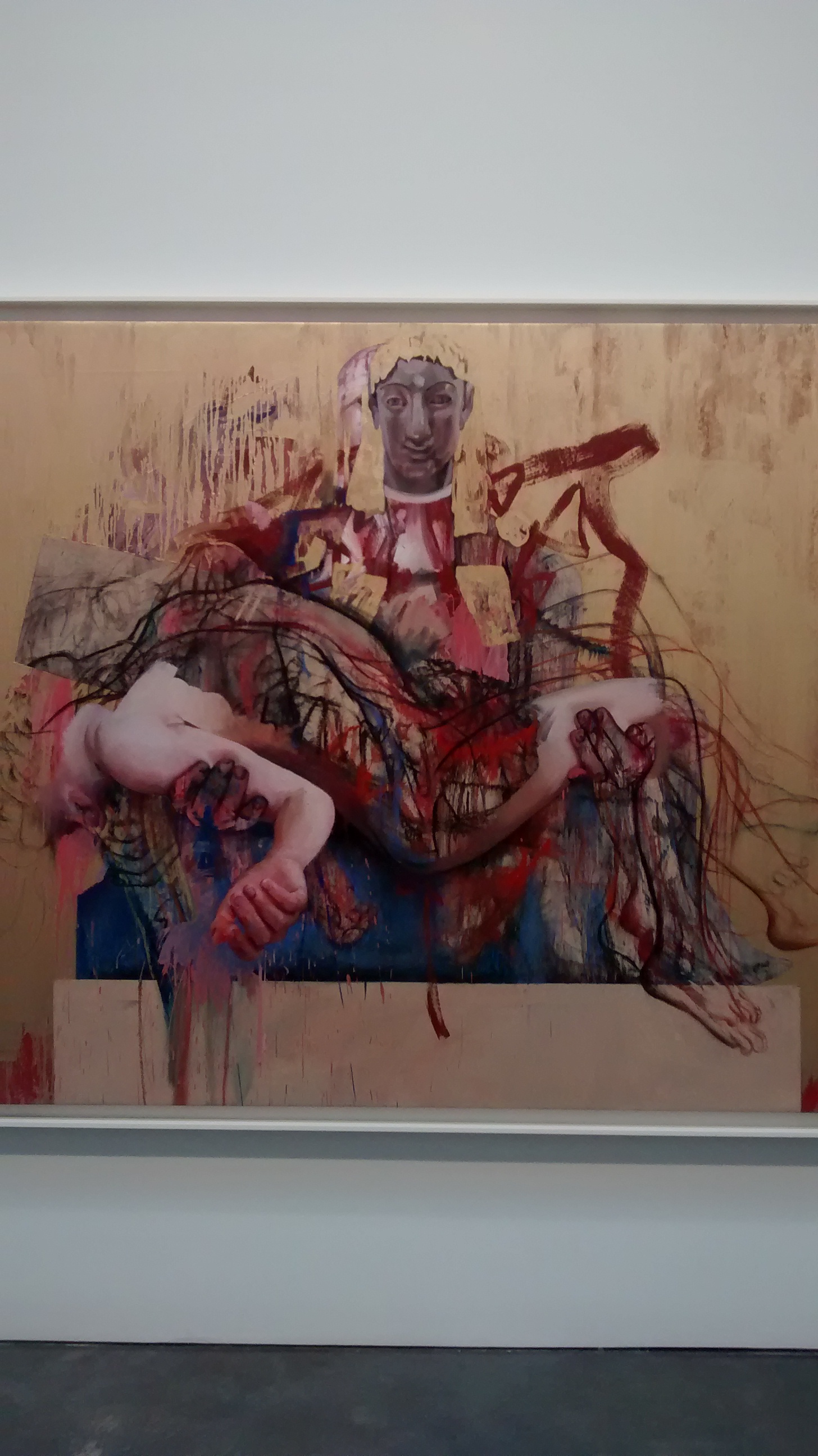
This being said, there is one work, in particular, that has caught my attention and I cannot help but share my thoughts on it. In the rear of the west part of the gallery hands an imposing work: Byzantium. Byzantium, depicts at its center an Apollo-esque figure carrying another (injured?) figure in a layout that clearly evokes the pieta structure. The scene takes place on an imposing, glistening gold background that distorts the perception of the space behind the figures similarly a Byzantine icon. Hence the title of the work.
The artist herself noted that she received training in Russian iconography which she used in making this specific painting. Saville transliterated the use of gold in a “new contemporary” way, as she said, and managed to give the piece some of the infinite space and pooling of light that Russian icons achieve. The clearer, more literal historical references, like the head of Apollo/Kouros or the structure of the Pieta, are as striking as they are hazy. They appear almost like ghosts, or memories of a past now haunting the present scene. What do they mean? It could be different for everyone. Are these memories yours? the artists? does it even matter?
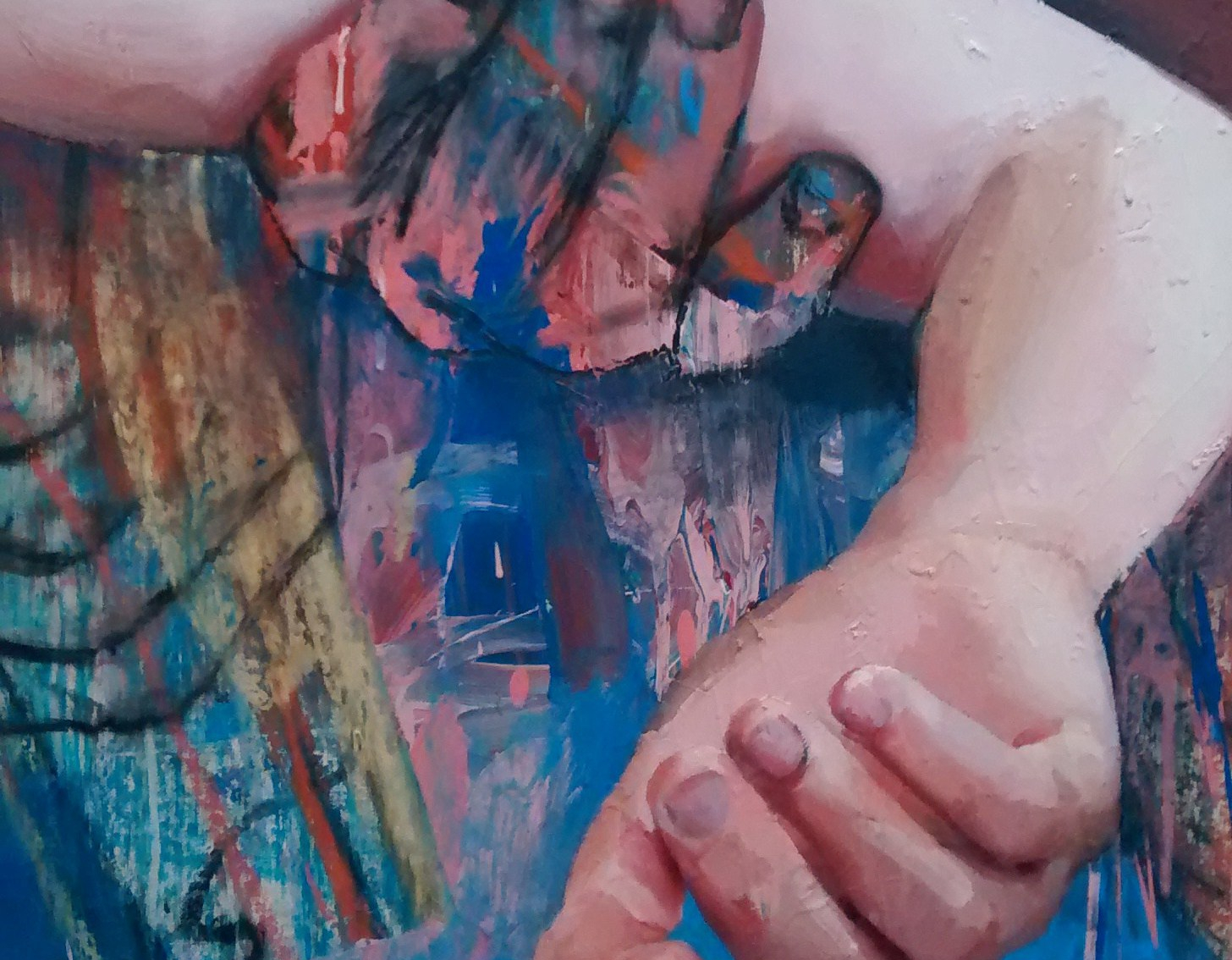

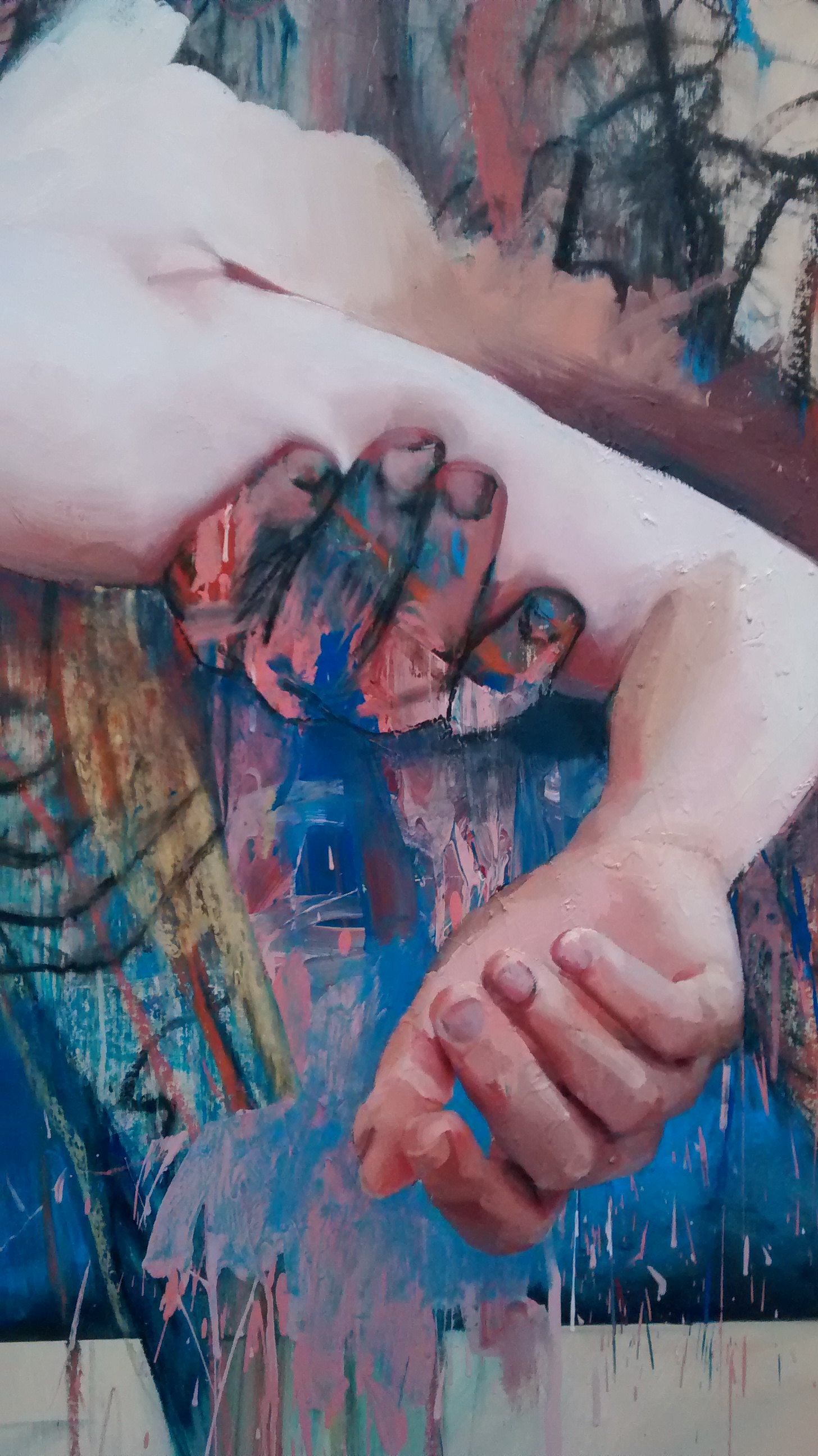
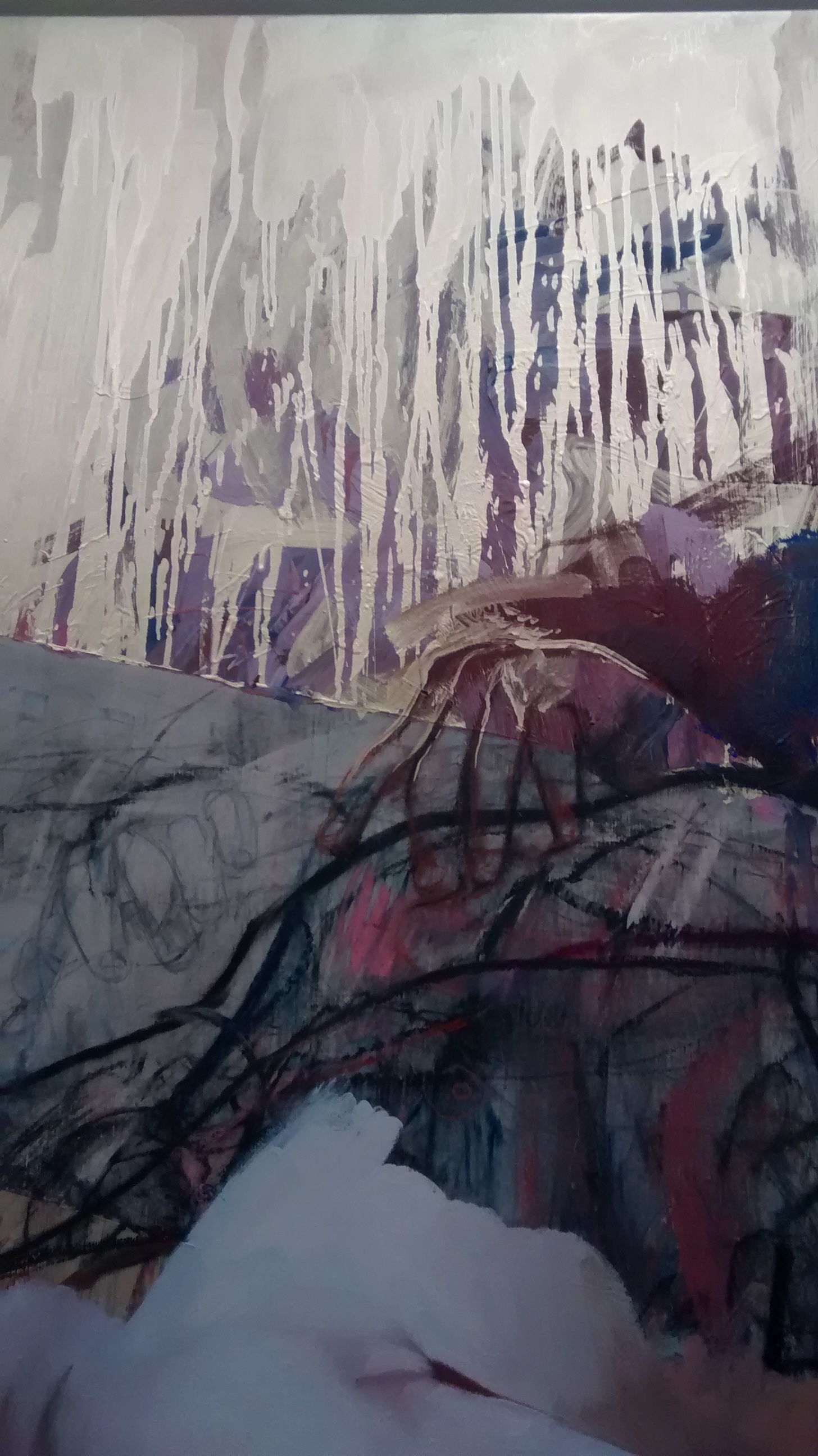
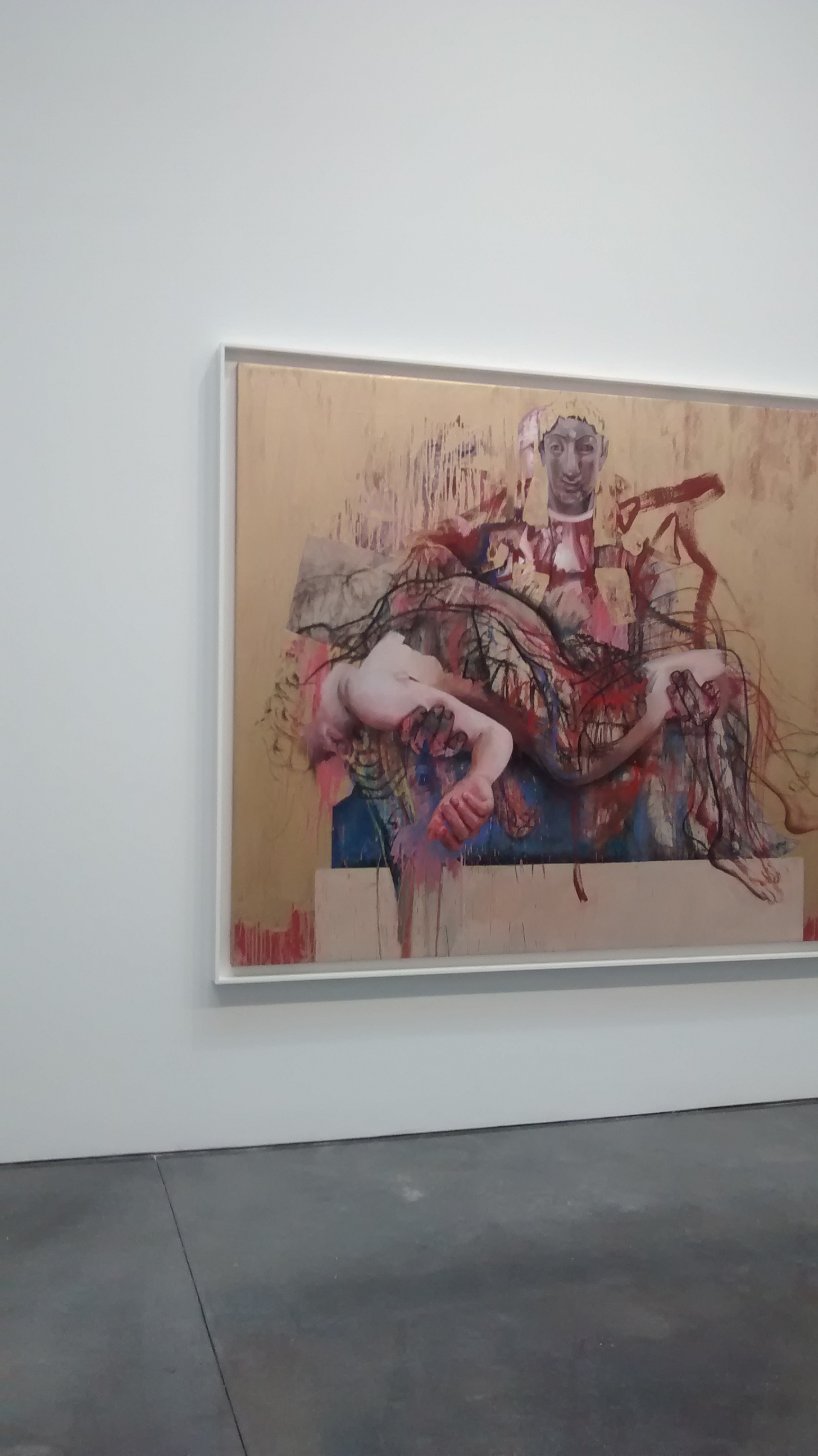
Comments are closed.